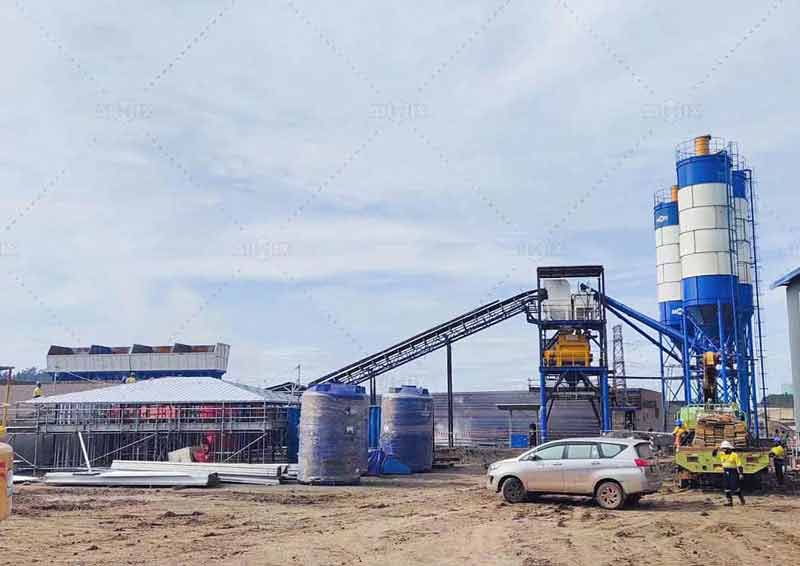


Discover how spare parts availability impacts mobile concrete plant ROI. Learn strategic parts management to maximize uptime and long-term value.
When evaluating mobile concrete plants, most buyers focus on upfront costs and production capacity while overlooking a critical factor that determines long-term profitability: spare parts accessibility. The difference between a mobile batching plant that delivers consistent ROI over a decade versus one that becomes a maintenance nightmare often hinges on the supplier’s parts ecosystem—their inventory depth, distribution network, and component standardization. This oversight can transform what appears to be a bargain purchase into an asset with crippling downtime costs and premature obsolescence.
Sophisticated investors recognize that true equipment value extends beyond the initial sale. A plant with 98% theoretical availability means little if missing a $200 seal shuts down production for three weeks. The hidden calculus of ownership involves evaluating mean time to repair (MTTR) metrics, parts commonality across model generations, and the supplier’s commitment to legacy support. These factors collectively influence not just operational continuity but also residual value when upgrading or reselling equipment.
Every hour a mobile plant sits idle waiting for parts creates exponential financial impacts. A delayed mixer blade replacement doesn’t just incur the part’s cost—it triggers cascading penalties from missed deliveries, idle crew wages, and potential contract breaches. Ready mix plants sourcing parts from overseas suppliers often face 4-6 week lead times, during which the entire investment generates zero revenue while still accruing financing and storage costs.
Not all replacements are created equal. Bargain-hunting operators frequently discover that non-OEM wear parts like mixer liners or conveyor belts last 30-40% fewer cycles than genuine components. This false economy forces more frequent changeouts, increasing both direct parts expenditure and indirect labor costs. Premium suppliers now offer performance-graded spare tiers, allowing buyers to match part quality to specific wear applications rather than defaulting to cheapest options.
The concrete industry’s shift toward automation and emission controls has accelerated equipment redesign cycles. Plants purchased just five years ago may face component sunsetting, where manufacturers discontinue support for older control systems or hydraulic configurations. Savvy buyers now demand written guarantees for parts availability timelines, with some leading suppliers offering 10-year assured support programs for critical assemblies.
A supplier’s parts warehouse locations directly impact emergency response capability. Regional distribution centers within 500km of your operation can mean same-day delivery for 80% of common wear items. Contrast this with single-centralized-inventory models where even expedited shipping adds 72+ hours to downtime incidents. The best providers now implement dynamic inventory algorithms that pre-position high-rotation parts based on regional usage patterns.
Advanced suppliers have transitioned from paper manuals to 3D interactive parts catalogs with augmented reality functionality. These systems allow technicians to identify components using smartphone cameras, reducing misordering incidents that account for 22% of parts-related delays. Some integrate directly with plant telematics, automatically generating parts requests when sensors detect abnormal wear patterns.
Forward-thinking operators classify spare parts into three tiers: mission-critical (items that halt production if failed), operational-critical (components that reduce efficiency when degraded), and non-critical. This triage system informs stocking decisions, with Tier 1 items kept on-site regardless of cost, while Tier 3 parts utilize just-in-time ordering. Modern inventory software can optimize these levels using failure rate data and lead time analytics.
Plants designed with modular subassemblies and standardized components slash parts complexity. A fleet using identical hydraulic cylinders across all mixers and conveyors reduces required SKUs by 60% compared to custom-configured plants. This standardization also enables cross-unit cannibalization during emergencies—a practice that’s saved numerous projects from missing critical pour deadlines.
Progressive suppliers now provide total cost of ownership calculators that model parts expenses over 5-10 year horizons. These tools factor in predicted wear rates, regional labor costs for replacements, and even anticipated design changes. Such transparency allows buyers to compare plants not just on sticker prices, but on genuine long-term value retention.
